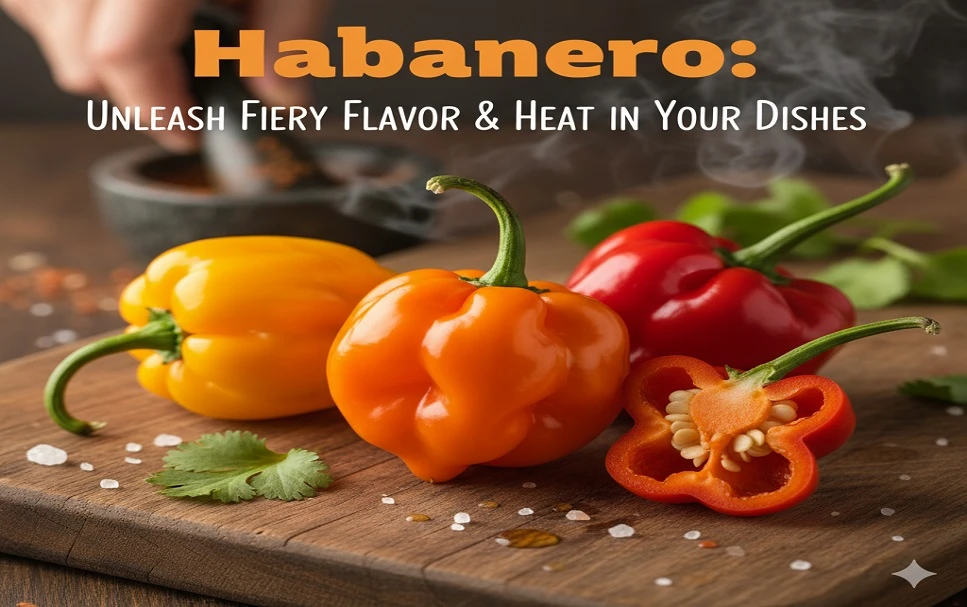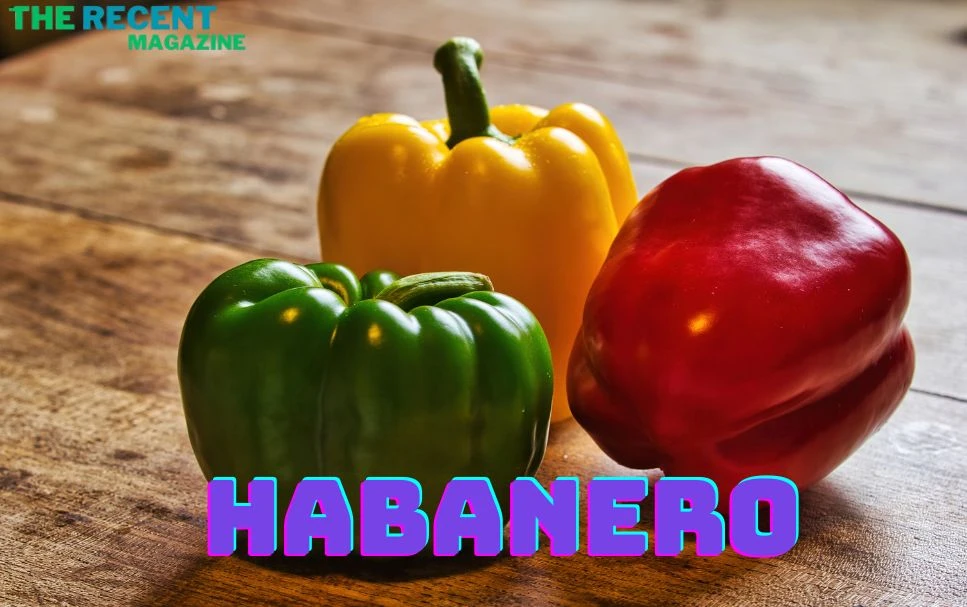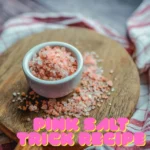Now Reading: Habanero: Unleash Fiery Flavor and Heat in Your Dishes
-
01
Habanero: Unleash Fiery Flavor and Heat in Your Dishes
Habanero: Unleash Fiery Flavor and Heat in Your Dishes

If you’re someone who loves bold flavors and a fiery kick, then the Habanero pepper is about to become your new best friend. This tiny chili packs an intense heat that can wake up your taste buds like nothing else.
But the habanero isn’t just about spiciness it carries a unique fruity and citrusy flavor that adds depth to any dish. Whether you’re craving a hotter salsa, a zesty marinade, or a sauce that stands out, understanding habanero peppers will take your cooking to the next level.
Ready to discover what makes this pepper so special and how to handle it safely? Keep reading to unlock the secrets of the habanero and spice up your meals in ways you never imagined.
Read More: newks discover the-ultimate fresh food
Habanero Heat Levels
The Scoville scalemeasures the heat of peppers. Habaneros score between 100,000 to 350,000 SHU. Jalapenos are much milder, at about 2,500 to 8,000 SHU. This shows habaneros are 20 to 100 times hotterthan jalapenos. The heat is strong and can last a while.
Handling habaneros requires care. Always wear glovesto avoid skin irritation. Avoid touching your eyes, nose, or mouth. Wash hands well after touching these peppers. Using milk or yogurt helps calm the burn if you eat too much.
Habanero Flavor Profile
The Habanero pepperhas a unique taste with fruity and floral notes. These flavors make it stand out from other hot peppers. The fruitiness gives a sweet touch that balances the heat well. The floral hints add a fresh and light aroma, making it pleasant to smell and taste.
Citrusy undertonesare also a key part of the Habanero’s flavor. These give a tangy, bright feeling on the tongue, similar to oranges or lemons. This citrus taste makes dishes more lively and fresh.
The distinctive aromaof Habanero is strong and inviting. It combines the spicy heat with sweet and floral scents. This mix makes it popular in many spicy sauces and dishes.
Habanero Appearance
Habanero peppersusually have a small, lantern-like shape. They come in bright colorssuch as orange, red, and yellow. Some are greenwhen unripe. These colors help show when they are ready to pick.
Rare habanero variationsinclude white, brown, and chocolatecolors. Shapes can be a bit rounder or longerthan usual. These types are less common but loved by some gardeners for their unique look.
| Harvesting Tips |
|---|
| Pick when color is bright and fully developed. |
| Use gloves to avoid skin irritation from the heat. |
| Harvest by cutting the stem, not pulling the pepper off. |
| Check plants daily during peak season for ripe peppers. |
Cooking With Habaneros
Habanerosadd a spicy kick to hot sauces and salsas. Their fruity and citrusy flavorblends well with tomatoes, onions, and cilantro. Use them sparingly for a perfect heat balance. These peppers make sauces vibrant and flavorful, ideal for dipping or topping.
Marinades with habaneros give meats a zesty, spicy taste. Combine habaneros with garlic, lime juice, and herbs. Let meats soak up the bold flavors before grilling or roasting. Seasonings with ground habanero powder add heat to soups and stews.
Caribbean and Latin dishes often feature habaneros. Try them in jerk chicken or spicy rice recipes. The heat complements tropical fruits like mango and pineapple. Habaneros bring authentic taste to many traditional meals.
Habanero Handling Tips
Wearing glovesprotects your skin from the spicy oils in habaneros. These oils can cause burning and irritation. Use disposable gloves to avoid contact with hands. Change gloves if they get torn or soaked.
Avoiding eye contactis very important. The spicy oil can cause severe pain and redness if it gets near your eyes. Never touch your face or eyes while handling habaneros. Wash your hands well after removing gloves.
Ventilation and safetyhelp reduce spicy fumes. Work in a well-ventilated room or near an open window. This stops the strong smell from irritating your nose and throat. Keep children and pets away while cutting habaneros.
Growing Habanero Peppers
Habanero peppersneed warm weather to grow well. Plant seeds indoors about 8 weeks before the last frost. Use seed trays or small pots with good soil. Keep soil moist but not wet. After the danger of frost passes, transplant seedlings outside. Choose a spot with full sunand well-draining soil.
Water plants regularly, especially in dry times. Avoid overwatering to stop root rot. Use mulch to keep soil cool and moist. Fertilize every few weeks with a balanced fertilizer. Support plants with stakes if they grow tall.
| Climate Needs | Harvest Time | Storage Tips |
|---|---|---|
| Warm temperatures 70-85°F (21-29°C) | Harvest after peppers turn bright orange or red | Store in a cool, dry place or refrigerate |
| Full sun exposure for 6-8 hours daily | Pick peppers carefully to avoid damage | Freeze for long-term storage |
Popular Habanero Products

Hot sauces and condimentsmade with habanero peppers offer bold, spicy flavors. Popular choices include mango-habanero sauces and hot pineapple blends. These sauces add a fruity kick along with intense heat, perfect for those who love strong tastes.
Fresh and dried habanero peppersare widely available in markets. Fresh peppers have a bright, lantern shape and a strong aroma. Dried peppers keep their heat and are great for long storage or cooking. Both forms bring a fiery punch to dishes.
Seeds for home growing habaneros let gardeners enjoy fresh peppers year-round. These seeds are easy to plant and care for. Growing your own peppers ensures a steady supply for cooking and making sauces at home.
Pairing Habaneros In Dishes
Balancing heat and flavoris key when using habaneros. Their strong spice needs to be softened with mild or sweet ingredients. Cream, yogurt, or coconut milk helps cool the heatwhile keeping flavor rich. Fruits like mango, pineapple, or peach add sweetness that contrasts the pepper’s sharpness. Tomatoes and onions work well to balance the overall taste in sauces or salsas.
Complementary ingredientsinclude lime juice, garlic, and cilantro. These enhance the pepper’s fruity and citrusy notes. Beans and rice can absorb some spice, making dishes more enjoyable. Cheese offers a creamy texture that contrasts the habanero’s crisp bite.
Try creative recipe ideaslike mango-habanero salsa, spicy chicken stew, or habanero-infused hot sauce. Mixing sweet and spicy creates unique tastes. Use habaneros sparingly; a little goes a long way. Experiment with small amounts first to match your heat preference.
Frequently Asked Questions
How Spicy Is A Habanero?
A habanero pepper rates between 100,000 to 350,000 Scoville Heat Units (SHU). It is significantly hotter than jalapeños. The heat is intense, sharp, and lasts longer. Use caution when handling or consuming due to its powerful spiciness.
Is A Habanero Hotter Than A Jalapeño?
Yes, habaneros are hotter than jalapeños. Habaneros score 100,000-350,000 Scoville Heat Units, while jalapeños range 2,500-8,000 SHU.
Which Color Habanero Is The Hottest?
The hottest habanero color is the Red Savina. It ranks highest on the Scoville scale, exceeding other varieties.
Does Habanero Have An Ñ?
No, habanero does not have an Ñ. It is spelled with a regular N, not the letter Ñ.
Conclusion
Habanero peppers bring strong heat and unique flavor to dishes. Their fruity, citrus taste adds depth beyond just spiciness. Small and colorful, they fit well in sauces and marinades. Handling requires care gloves protect your skin from burning oils. These peppers spice up meals with bold, exciting heat.
Try them to add a new twist to your cooking. Enjoy the vibrant taste and fiery kick of habanero peppers.























